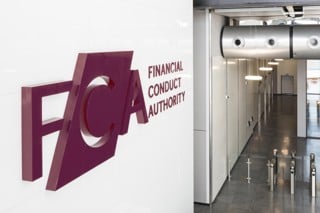Alphera has seen the majority of plug-in vehicle customers opt for personal contract purchase (PCP) as the method for financing their vehicles, rather than the industry’s expectation for personal contract hire (PCH) to be the preferred method.
The finance house has published the first of six chapters from its Financing the Car of the Future 2016 as part of its 10 year anniversary in the UK. Chapters will be launched throughout the year, with the first all about alternative fuelled vehicles.
Spencer Halil, Alphera director, said: “The way in which finance has evolved around the rapidly-developing ultra low emission vehicle industry has been really interesting.
“PCH was expected to to be the product of choice – to take into account technology obsolescence and battery developments – but the reality is actually that the majority of deals are still being done on PCP.”
Halil said this could be due to early adopters doing a lot of research and having a much higher level of confidence in EVs. He also said the popularity of PCPs in the market means dealers are used to explaining and selling it as a finance option.
Alphera expects PCH or leasing to overtake PCP as the preferred method for plug-in vehicles in the future as they become more present in the UK’s vehicle parc.
Halil believes there will then be an eventual shift back to ownership finance products as battery technology “settles down”.
He said: “Currently, EV batteries tend to run on a two to three year development cycle, a bit like a mobile phone upgrade, but this rapid evolution will eventually settle down.”
Dylan Setterfield, Cap HPI’s senior RV editor, believes that consumer acceptance will continue to be a challenge when it comes to managing the speed at which values decrease on pure EVs in particular.
Setterfield said: “The first generation of Battery Electric Vehicles (BEV) has aged at a far faster rate than the rest of the vehicle population, with the used market for these vehicles still struggling to overcome significant barriers.”
Setterfield believes that while range anxiety and battery replacement are concerns, the major hurdle is still cost.
He said: “Not just the high initial price of the vehicle due to the expense of battery production, but also in terms of total cost of ownership.
“Ironically, the low residual values are a big cause of the increased depreciation cost over internal combustion engine (ICE) equivalents, contributing to a downward spiral of desirability which negates the advantages of electric charging over the cost of fuel.”
Dealer case study: Richard Sanders Group
Family-owned Richard Sanders Group operates dealerships across Northamptonshire representing the Citroën, DS, Renault, Nissan, Peugeot, Honda and Dacia brands. With the Renault Zoe and Nissan Leaf among the models on its forecourt, Richard Sanders Group has significant exposure to financing electric and hybrid vehicles.
Son of the founder, and joint managing director at Richard Sanders Group, Mark Sanders, believes that ultra low emission vehicles offer a growth market, but that this might take longer than the industry initially thought.
He said: “Customer perception is still incredibly important when it comes to electric and hybrid vehicles, with range anxiety continuing to concern some consumers. However, when you get the opportunity to actually have a conversation with the customer, highlighting the attractive financial proposition and low running costs, then you can see the light bulb come on.
“While the concept of the main loan for an alternatively-fuelled vehicle is much the same as for a conventional model, the biggest difference is around the battery lease versus ownership debate.”
Sanders said that as long as the monthly payment implications are explained properly, customers are open to having a battery on lease. However, in the used market, it is ownership which is taking the lead.
Sanders said: “With all alternatively-fuelled vehicles, the customer is likely to base at least part of their decision on the price of fuel and, with oil prices so low at the moment, the cost saving potential is perhaps not as strong as it could be.
“The gap of running costs and prospective savings for alternatively-fuelled vehicles needs to be substantial enough to prompt consumers to overcome their inertia and adopt new technologies.”
Sanders believes that while some early adopters are attracted by technology and “the green factor” the numbers have to stack up to make plug-in vehicles stack up for mainstream customers.
He said: “Finance providers will need to invest in their products and the deals on offer to help attract consumers into a new (or used) ultra low emission vehicle. There is still plenty of work to be done in understanding the risk profiling, technology and the lifestyle considerations around electric and hybrid vehicles.”
Manufacturer case study: BMW
Carl Sanderson, BMW i and Mobility Services general manager, said the business was initially surprised at the shape the early adopter market took when the i3 was launched in 2014.
Customers were purchasing the vehicle outright, rather than through finance. BMW sells its plug-in i models through a multi-channel sales model, comprised of authorized i dealers within the BMW dealer network, a Customer Interaction Center (CIC) as well as an online platform.
Sanderson said: “As we’ve moved from those early adopters into the early majority market, there has been far greater uptake of finance.
“The direct sales model, which means there is a fixed price for the car itself, is prompting those potential customers who are keen to get a deal to look at the other options. Clearly, the wriggle room is in the finance.”
The market has been slightly different for the i8 plug-in super hybrid, with finance playing a larger role earlier in the process.
Sanderson said: “Many of the i8 customers, in many cases conquest business from the luxury saloon and SUV market, are entrepreneurs and business owners who have embraced the tax efficient opportunities that the vehicle provides.
“With this in mind, there has been a big influx in interest around the end of the tax year. Looking at subsidies, and the changes the plug-in grant to a tiered system, the impact on the i3 market has been minimal. However, we have seen more debate around the exclusion from the regime from potential i8 customers, savvy business owners looking for the best deal.”
Sanderson is expecting finance to have greater penetration as electric and hybrids become more mainstream.
He said: “Finance will help to mitigate against the ongoing developments in technology. With step-change upgrades happening in the technology every two to three years, it is important that consumers are aware of the impact of the second hand market and residual values. Through appropriate finance deals, they will be able to protect themselves against the impact of future technology developments on the resale value of their vehicle.”




















Login to comment
Comments
No comments have been made yet.